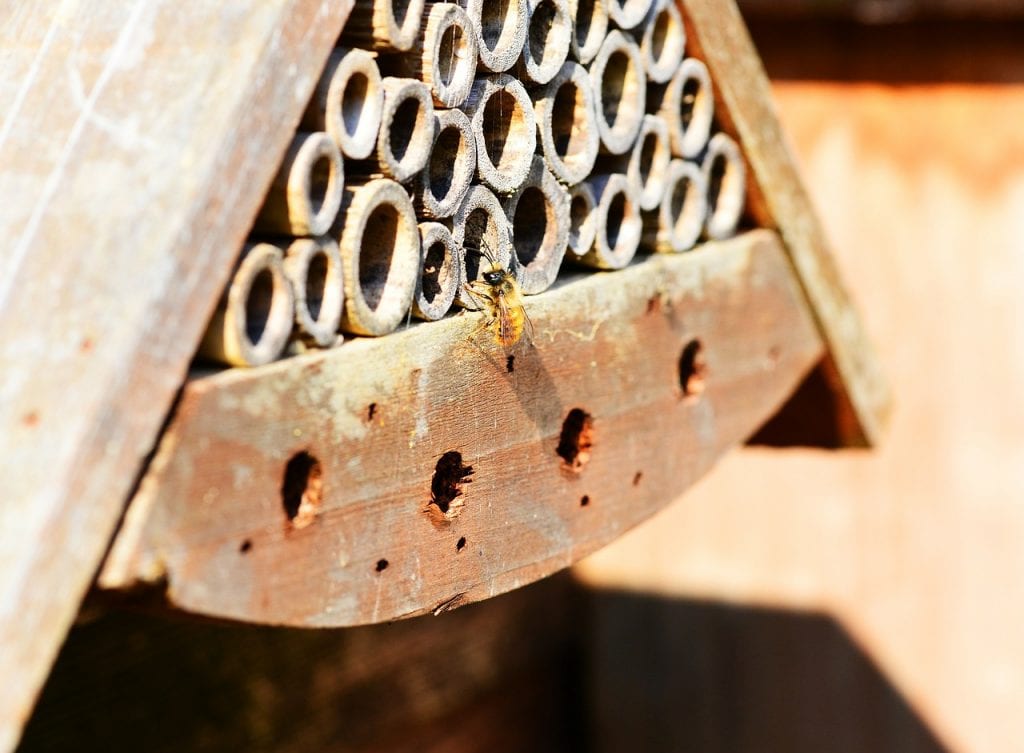4 Things to Know About Solitary Bees

What’s the first thing that comes to mind when you think of bees? For many people, the thought of bees evokes images of swarms and buzzing beehives. But did you know that over 90% of the bees out there are considered solitary bees?
Solitary bees are fascinating because they aren’t discussed as much as their honey bee and bumblebee counterparts; yet, they are responsible for much of the pollination that occurs today. There are over 200 species of these bees around the world, so it’s definitely worth learning more about the solitary bee.
4 Things to Know About Solitary Bees
Although considered solitary, solitary bees aren’t completely on their own.
While honey bees build nests, raise young and provide for the hive as a group, solitary bees typically live alone. Some species are truly solo, with a single female building a nest in the ground, various cracks and crevices or in wood to lay her eggs.
Other species live in groups called aggregations, where they build separate nests that are close in proximity to each other. Still others are considered communal where there is a shared entrance to multiple nests, each built by a single female bee.
Solitary bees are not aggressive.
Species of solitary bees do not make honey and do not have a hive to protect. Because of this, they are not usually aggressive toward humans and animals like more social bee species. Female solitary bees have stingers, but will rarely sting unless provoked. Male solitary bees do not even have stingers. They can still act defensively if provoked, but they can’t really do any harm.
Solitary bees keep busy during their short lives.
Usually in the spring, male solitary bees will exit the nest and hang around the entrance for the female bees to emerge. After mating, the males die and the female solitary bees will leave in search of a new nest. Females typically lay between 1 and 20 eggs which will develop into larvae during the summer and winter, emerging in the spring and continuing the cycle once again. Female solitary bees live for just over a month!
Solitary bees come in many varieties.
As we mentioned earlier, there are over 200 different species of solitary bees. They come in a wide variety of sizes, shapes and colors. Many species look very similar to some of the common flying critters that we see, like yellow jackets, honey bees and flies.
Some of the most common species of solitary bees include:
- Leafcutter Bees
- Mason Bees
- Carpenter Bees
- Plasterer Bees
- Digger Bees
- Sweat Bees
- Mining Bees
Habitats for solitary bees are slowly diminishing, but many gardeners and bee lovers are creating additional nesting sites with both natural and manufactured products to encourage these bees to nest and continue the pollination cycle.
D-Tek Live Bee Removal
Solitary bees typically do not need to be removed because they are non-aggressive and don’t form swarms or large beehives. However, if you find yourself with aggressive bee visitors or bees that have built their nest in your home or other structure, you need the professionals at D-Tek Live Bee Removal. Our team is the expert in San Diego County live bee removal and bee repairs.
Don’t let your bee situation become a bee emergency!
Call us today for a quote.
